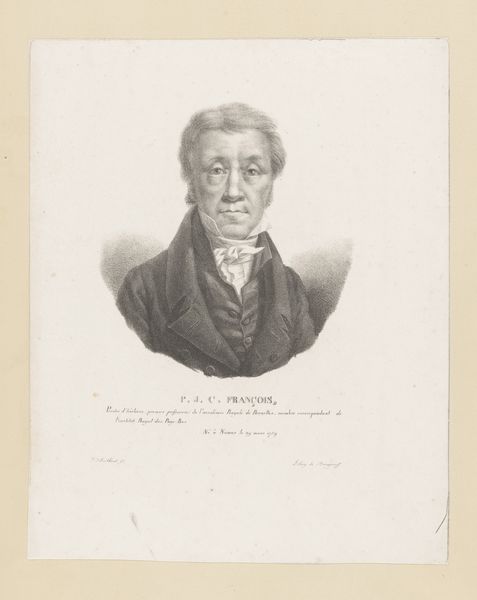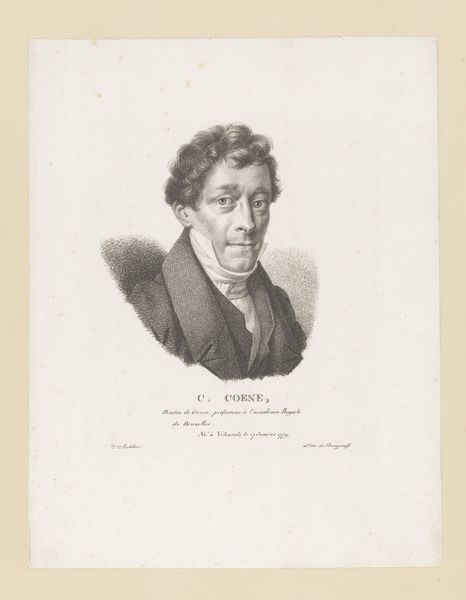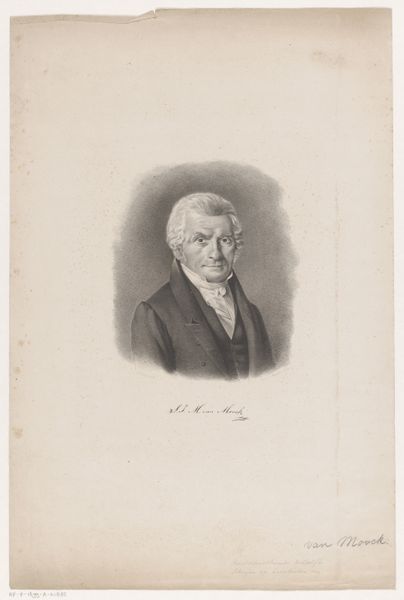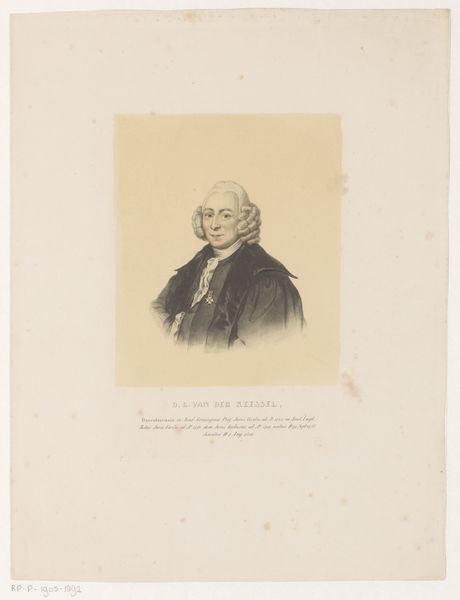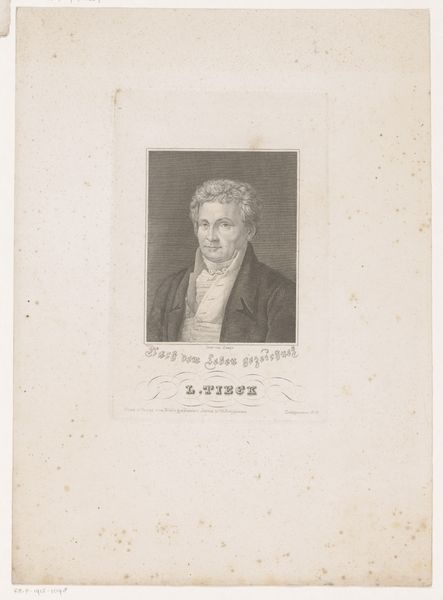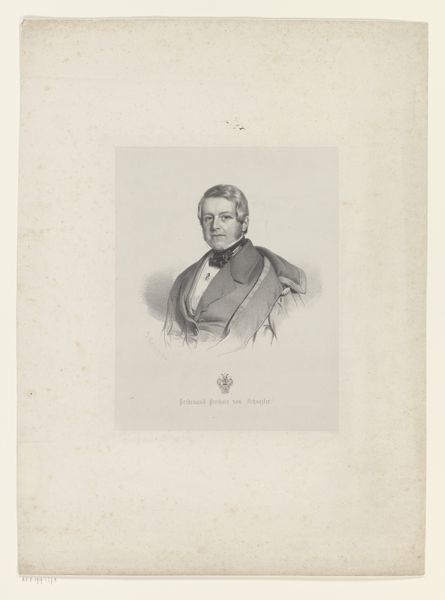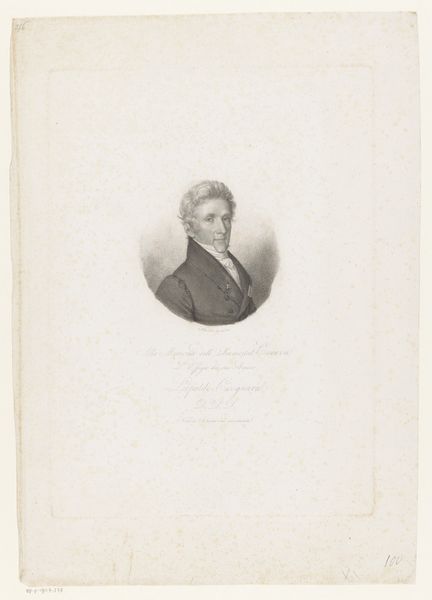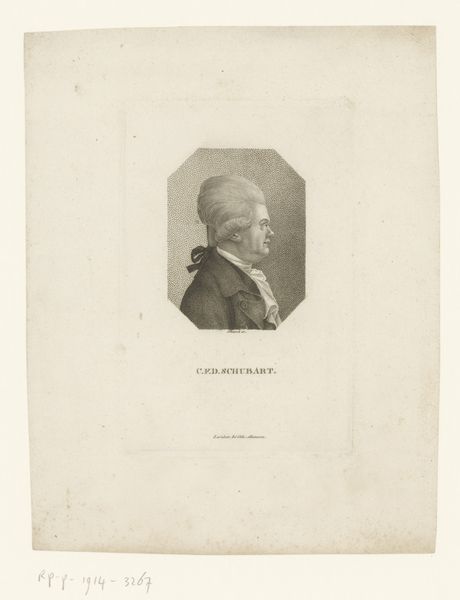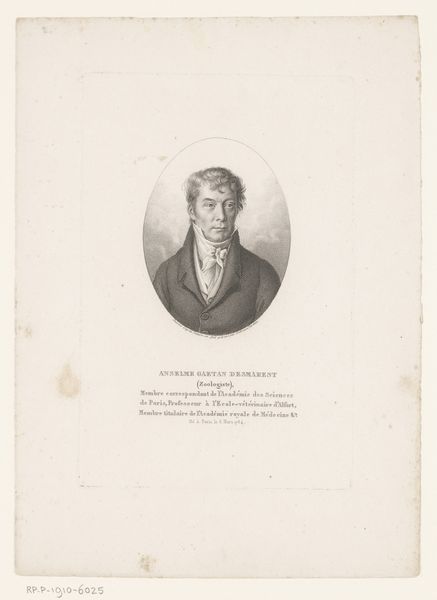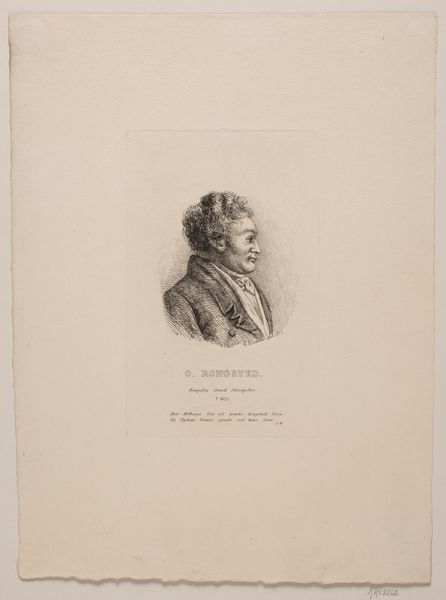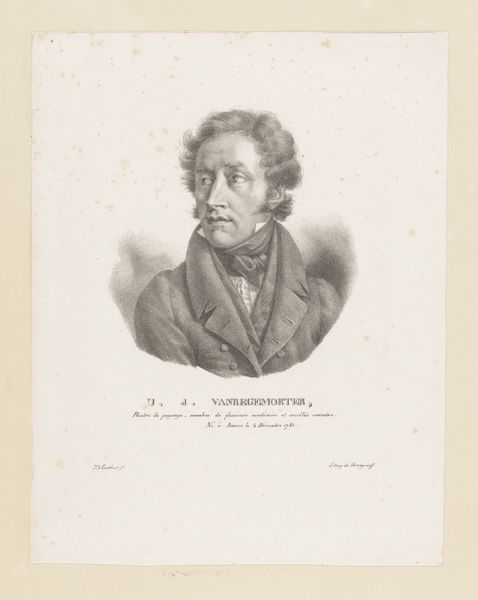
print, engraving
#
portrait
#
neoclacissism
# print
#
history-painting
#
engraving
Dimensions: height 202 mm, width 123 mm
Copyright: Rijks Museum: Open Domain
Curator: This is an engraving from the Rijksmuseum's collection titled "Portret van Andries Lens." It's from somewhere between 1803 and 1856, and was made by Guillaume Philidor Van den Burggraaff. Editor: It strikes me as rather stern! There’s an almost confrontational directness in his gaze, though tempered by the rather soft rendering around his hair. Very neoclassical in its almost severe composition. Curator: Absolutely, you've picked up on the core essence here. Van den Burggraaff was operating in a time dominated by Neoclassical ideals. Observe how the lines are clean and precise, striving for a sort of idealized representation of the sitter. There’s also something rather historical in its theme. Editor: The limited palette—only shades of grey—adds to that serious feel. Look at the way light and shadow are deployed. Almost theatrical, in a way, accentuating the textures of his clothing, and really defining his facial features. Curator: Precisely. And the details aren’t accidental! Lens’ attire with its high collar and cravat speaks to a particular era of men's fashion. It all constructs the identity and status of the man. Editor: His eyes especially. I am captivated. It feels less about flattery and more about recording him as a man of authority. What do you notice about the man, given his official clothing? Curator: I get a real sense of intellect and presence through those eyes too. There’s also the subtle adornment of his medal that denotes his official status. In this sense it is more than simply a representation but functions as an embodiment of civic or academic respect. The inscription in the work itself also functions as such. Editor: An embodiment. That’s very well said. Something about this image manages to capture both a real, living presence and the weight of a formal historical record. A kind of balance between intimate and imposing. Curator: It offers more than just a glimpse into a life and the art of engraving, but serves as a sign of society and life during that period. Editor: Ultimately it feels like an honest portrait, both technically accomplished, yes, but also surprisingly psychologically insightful.
Comments
No comments
Be the first to comment and join the conversation on the ultimate creative platform.
